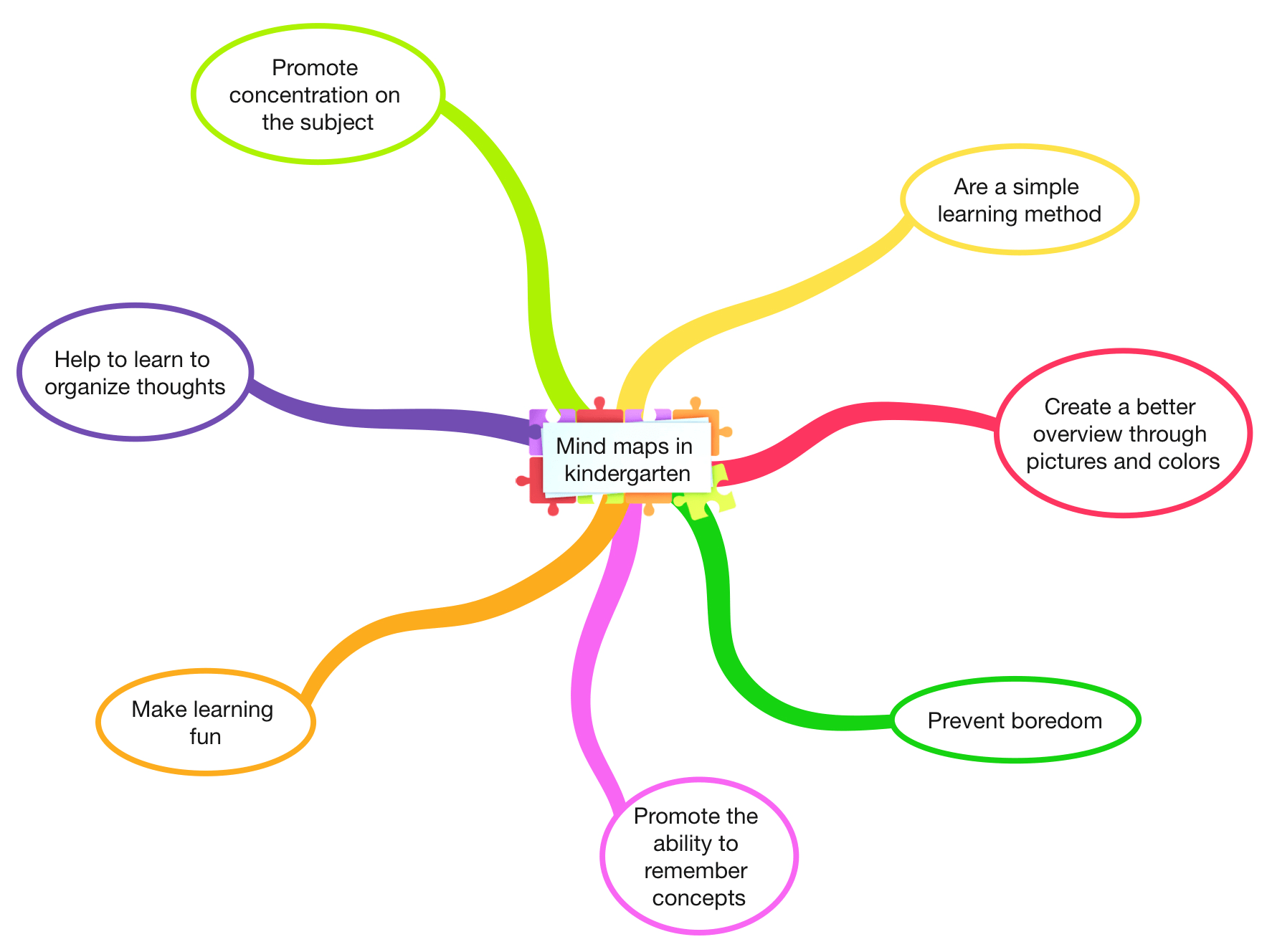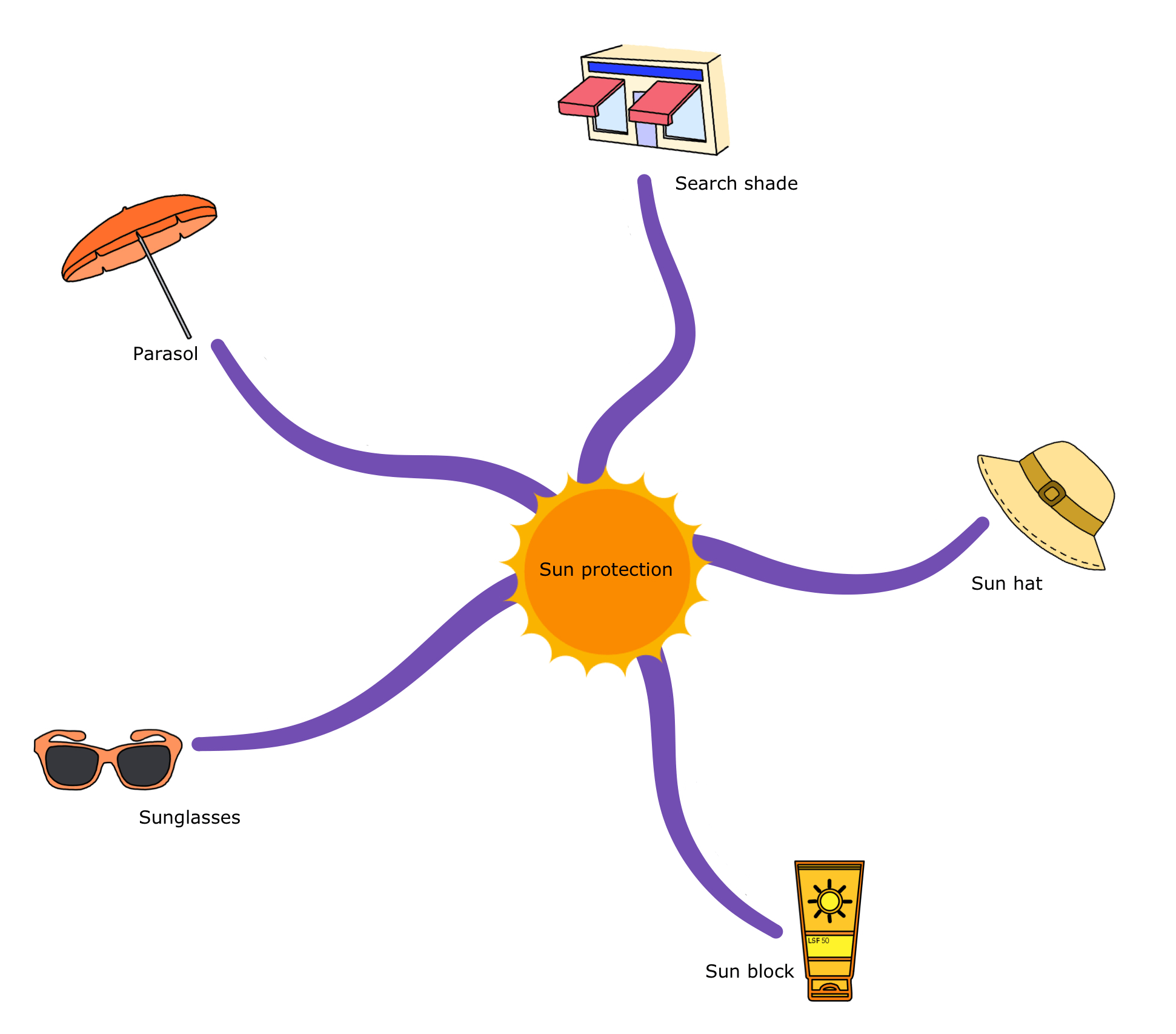Mindmaps in the kindergarten. Why, why, why?
The idea for my mind map books came to me during a trip to Asia. On my travels, I like to browse through the children’s sections of local bookstores. It is very interesting to see what the different countries have to offer. Somehow, children’s books are a mirror of how a society feels about its children. Surely you know that in Asia a lot of importance is attached to a good education. This starts already in kindergarten. Books with mind maps on various topics are already available in Asia for the smallest of the little ones as picture books. For our standards kitschy-colorful, as one knows many things from Asia. That was the inspiration for my own version of mind map books.
Ultimately, mind maps are used to visualize thoughts on a certain topic on paper. This transfer from the head to the paper helps to “grasp” the topic better, but also to bring it closer to others. And it is precisely these two things, “grasping” and “bringing closer”, that make child-friendly mind maps a wonderful pedagogical tool in kindergarten.
Mindmaps in the kindergarten:
- Help to learn to organize thoughts.
- Make learning fun.
- Promote the ability to remember concepts.
- Prevent boredom.
- Create a better overview through pictures and colors.
- Are a simple learning method.
- Promote concentration on the subject.
This list I have put together in my mind and written down. As mind maps it looks like this:

Just as I could continue the enumeration, I can also add more branches to the mind map. For example, I could think about the point “Helping to learn to organize thoughts.” more and add points from there. And so on, and so forth.
Here you can see an excerpt from one of my mind maps for use in the kindergarten. For the children, I work with pictures. I think this example illustrates very well how great a mindmap can be used in the day-to-day life of a kindergarten. For example, you can provide the basic idea and then collect the individual thoughts together with the children and add them to the mind map. In the example, the basic theme is summer, sun, beach and more. In the course of creating the mind map together with the children, the conversation turns to the weather and finally to the point of sun protection.

If you continue this consistently, after some time you will have a large “mind map tree” for the respective topic.
With my mindmap books you always get:
1. A ready-made mind map on a clearly defined topic.
I have divided this mind map into its individual elements for you so that several smaller mind maps (usually between 10 and 15 individual mind maps per topic) have been created. You use the large mind map as a basis for the topic and work through the topic together with the children using the smaller ones. I provide you with the mind maps already filled in, but also empty.
2. Matching motifs
In all mind maps, I work with pictures. These are included appropriately for each mind map. You get the motives in a large version (each for coloring and colorful) to stick them for example on the wall. The children can use a smaller version for coloring in their own mind maps.
3. All motifs from the book once again in A4 format for coloring.
I recommend downloading the reading sample for the respective mind map. It contains once again an explanation as well as an example mindmap.